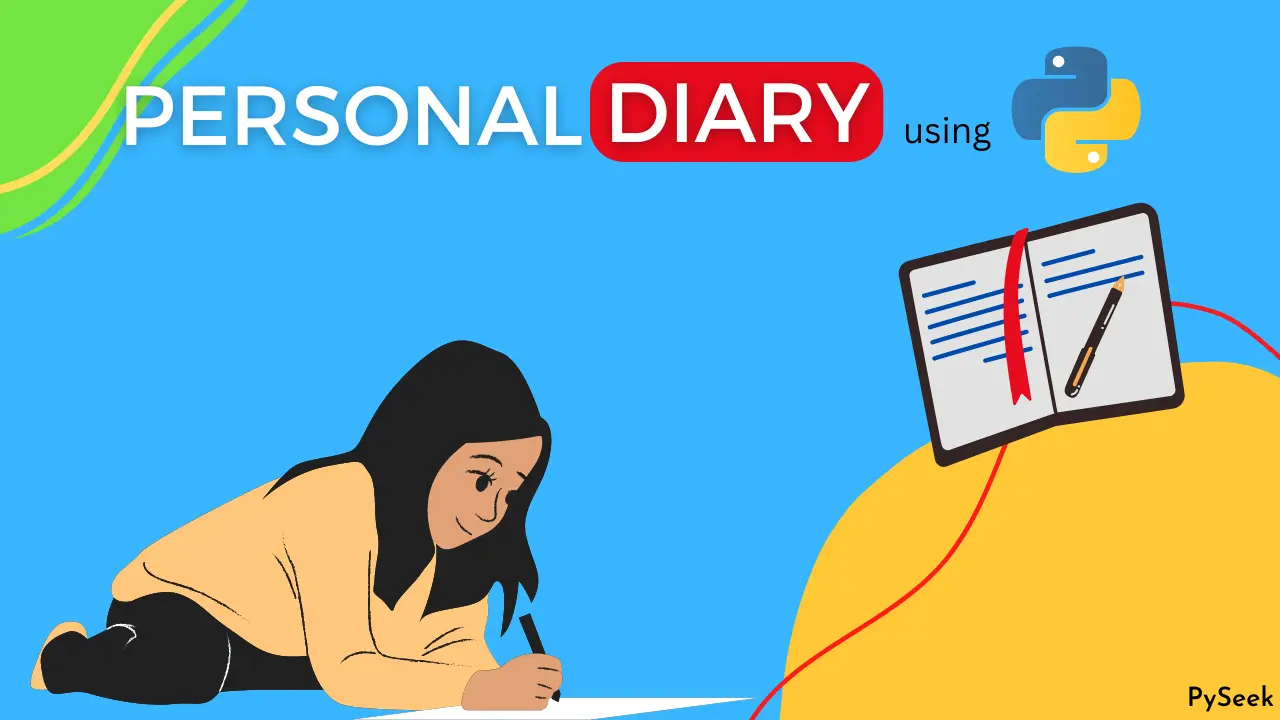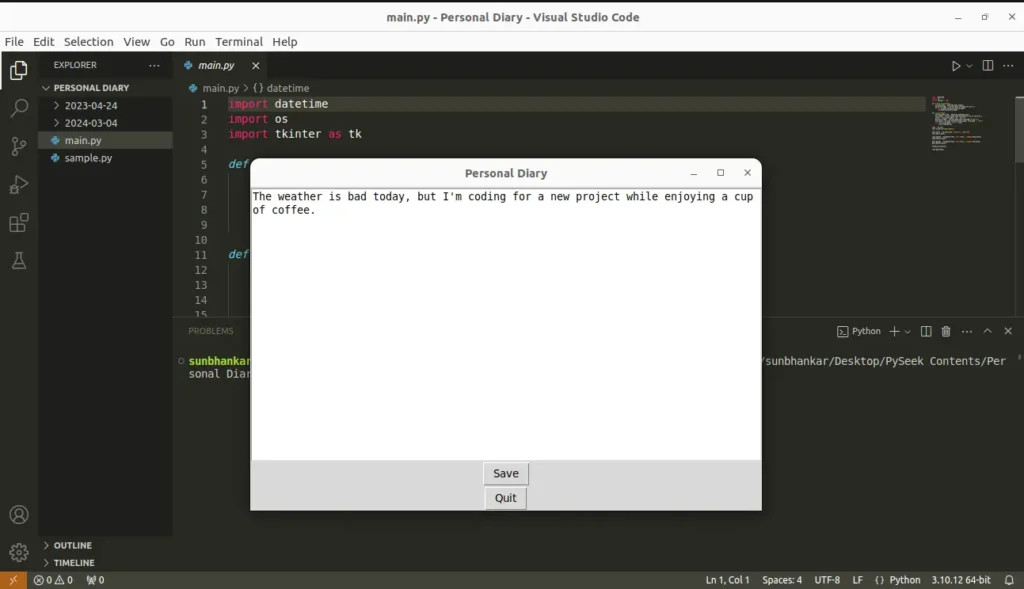

Introduction
In today’s digital age, the traditional way of keeping a personal diary may seem outdated. However, there is something about putting pen to paper that cannot be replaced by technology. What if we could combine the two and create a personal diary using Python and the tkinter library? In this article, we will explore how to create a simple diary using Python and tkinter.
Using this diary application, You can write your text and save it. The saved data will be stored in a text file with the current date and time.
Requirements
If Python isn’t already a resident on your system, fear not! Grab the latest version from their website (https://www.python.org/). Next, you need the Tkinter library to design a beautiful graphical interface but don’t worry; it’s pre-installed with Python!
Let’s Begin
First, we need to import the necessary modules. We will use the datetime module to get the current date and time, the os module to create a directory to store our diary entries, and the tkinter module to create the user interface.
import datetime import os import tkinter as tk
Next, we will define a function to create a directory to store our diary entries. We will use the os module to create a directory with the current date as the name.
def create_directory():
current_date = datetime.date.today()
directory_name = current_date.strftime('%Y-%m-%d')
if not os.path.exists(directory_name):
os.mkdir(directory_name)Now, we will define a function to save our diary entries. The function will open a file with the current date and time as the filename and write the entry to the file.
def save_entry():
current_date_time = datetime.datetime.now()
file_name = current_date_time.strftime('%Y-%m-%d %H-%M-%S')
entry = text_entry.get('1.0', 'end-1c')
directory_name = current_date_time.strftime('%Y-%m-%d')
file_path = os.path.join(directory_name, file_name + '.txt')
with open(file_path, 'w') as file:
file.write(entry)The next step is to create the user interface using Tkinter. We will create a main window with a text box for entering diary entries and two buttons for saving and quitting.
root = tk.Tk()
root.title('Diary')
text_entry = tk.Text(root, height=20, width=50)
text_entry.pack()
save_button = tk.Button(root, text='Save', command=save_entry)
save_button.pack()
quit_button = tk.Button(root, text='Quit', command=root.quit)
quit_button.pack()
create_directory()
root.mainloop()When we run the program, it will create a directory with the current date as the name, open a text box for entering diary entries, and save the entries to a file with the current date and time as the filename.
Output
The above program outputs the following:

Conclusion
Creating a personal diary using Python Tkinter is a fun and rewarding project that can level up your programming skills. You can customize this diary application to suit your needs and preferences.
Don’t hesitate to ask any questions in the comments below!
Want to see more of what Tkinter can do? Check out our separate page for inspiring Tkinter examples designed for Python projects.
- Create a Meditation App in Python with Tkinter
- Create an Age Calculator in Python using Tkinter
- Create a Junk File Organizer in Python using Tkinter
- Create an Image Compressor in Python using Tkinter
Happy Coding!



